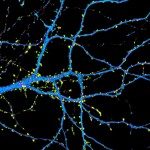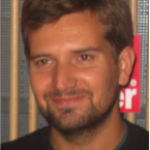Lien vers Pubmed [PMID] – 33031496
Lien DOI – nsaa14110.1093/scan/nsaa141
Soc Cogn Affect Neurosci 2020 Oct; ():
The bulk of social neuroscience takes a ‘stimulus-brain’ approach, typically comparing brain responses to different types of social stimuli, but most of the time in the absence of direct social interaction. Over the last two decades, a growing number of researchers have adopted a ‘brain-to-brain’ approach, exploring similarities between brain patterns across participants as a novel way to gain insight into the social brain. This methodological shift has facilitated the introduction of naturalistic social stimuli into the study design (e.g., movies), and, crucially, has spurred the development of new tools to directly study social interaction, both in controlled experimental settings and in more ecologically valid environments. Specifically, hyperscanning setups, which allow the simultaneous recording of brain activity from two or more individuals during social tasks has gained popularity in recent years. However, currently there is no agreed-upon approach to carry out such inter-brain connectivity analysis, resulting in a scattered landscape of analysis techniques. To accommodate a growing demand to standardize analysis approaches in this fast-growing research field, we have developed HyPyP, a comprehensive and easy open-source software package that allows (social) neuroscientists to carry-out and to interpret inter-brain connectivity analyses.


